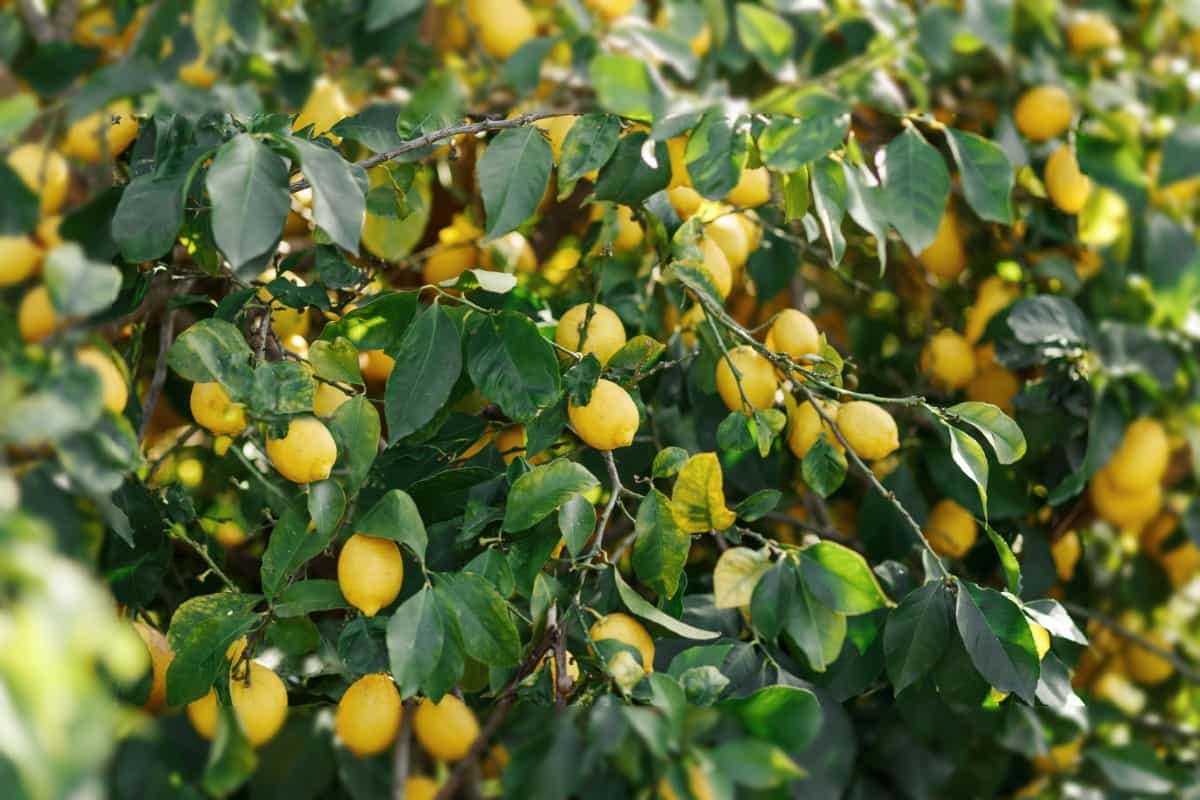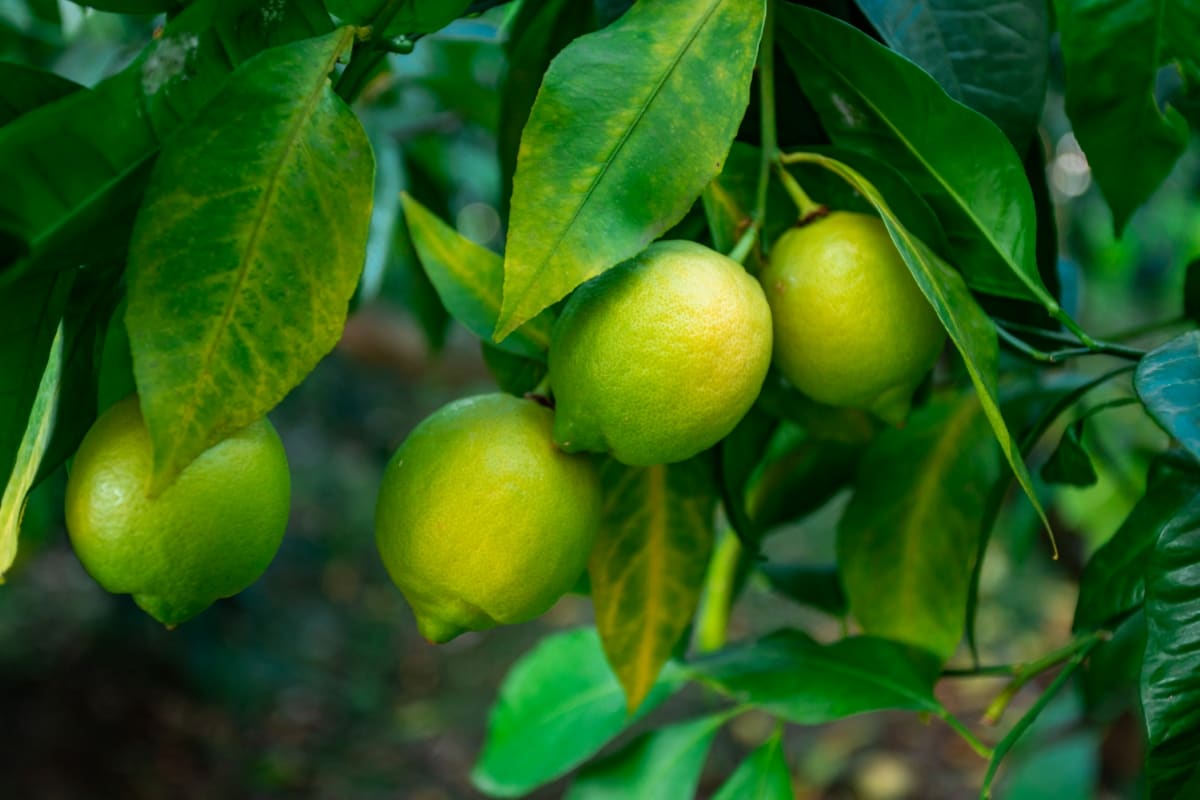Welcome to our comprehensive guide on common citrus tree diseases! If you’re a citrus enthusiast or a proud owner of these vibrant trees, it’s crucial to understand the potential threats they face. This blog explores disease symptoms, spread, control, prevention, and management.

Common Citrus Tree Diseases
Overview of Citrus Farming and Production
Because of its importance in agriculture, India is ranked as the world’s fifth-largest producer of citrus fruits. India is a prominent contributor to the global citrus industry alongside other countries, including Spain, the United States, Israel, Morocco, South Africa, Japan, Brazil, Turkey, and Cuba. North East India is pivotal in the history of various citrus species originating in Southeast Asia’s tropical and subtropical regions, including India and China. India’s vast citrus groves, covering 846,000 ha, yield a massive 7,464,000 metric tons annually.
Orange (mandarin or tantra), sweet orange (mosambi, malta, or study), and lime/lemon (known as ‘Pati lime’ or ‘Kagzi lime’) are all popular commercial citrus cultivars in India. The most important citrus-growing regions in India include the states of Maharashtra, Andhra Pradesh, Punjab, Karnataka, Uttarakhand, Bihar, Orissa, Assam, and Gujarat. Unfortunately, over 250 bug and mite species negatively impact plant growth in India’s citrus orchards, especially during the fresh flush period. Brazil, China, India, Mexico, and Spain are the top five countries producing citrus.
Most Common Citrus Tree Diseases
The world of citrus trees is not immune to diseases, and being aware of the most common ones is essential for citrus growers. Citrus Canker, caused by the bacterium Xanthomonas citri subsp. citri, results in raised corky lesions on fruits, leaves, and stems. Citrus Tristeza Virus leads to tree decline and reduced fruit quality. Phytophthora Foot Rot causes root decay, leading to wilting and death. Citrus Scab, caused by the fungus Elsinoë fawcettii, creates scaly lesions on fruits. Citrus Black Spot, caused by the fungus Guignardia citricarpa, causes dark, sunken spots on fruits.
Gummosis Diseases of Citrus Tree Control and Management
Gummosis is a citrus tree disease caused by pathogens like Phytophthora parasitica, P. palmivora, and P. citrophthora.
Symptoms and Disease Spread
Its symptoms include yellowing of leaves, bark cracking, and excessive gumming on the surface. The primary source of infection is infected planting material. Severe gumming leads to the decay of the bark, resulting in the tree drying out due to girdling. Sometimes, the tree may bloom heavily but die before the fruits mature, known as foot rot or collar rot. The pathogen responsible for gummosis exhibits aseptate, intercellular, and intracellular hyphae. The spread of the disease occurs through soil inhabitants and sporangia carried by rainwater, irrigation water, and wind.
Effective Management
- Selecting well-drained sites.
- Using resistant rootstocks.
- Preventing water contact with the trunk through ring irrigation.
- Scraping out diseased portions and disinfecting the cut surface.
- Painting the stem with a Bordeaux mixture.
- Utilizing fungicides like Ridomil MZ 72 and Aliette.
Scab/Verucosis Diseases of Citrus Tree Control and Management
Scab/Verucosis, caused by the pathogen Elsinoe Fawcett, exhibits distinct symptoms on citrus trees.
Symptoms and Disease Spread
In the early stages, small semi-translucent dots appear on the underside of the leaves, eventually developing into raised pustular elevations. The leaves can become distorted, wrinkled, stunted, and deformed as the disease progresses. On the fruit, corky projections form, which may break and result in scabs. The affected area shows a circular depression with a pink-to-red center on the opposite surface.
The pathogen’s ascostroma are simple, innate, and either intra or sub-epidermal. They are partially erumpent at maturity and range from small pulvinate to crustose structures. The asci are ovoid, and the ascospores are oblong to elliptical with 1-3 septa, appearing hyaline to yellowing. Conidia, produced in acervuli, are hyaline, oblong, and elliptical and feature two tiny droplets at their ends. The pathogen survives during the off-season as ascospores and spreads through conidia.
Control Measures
To manage the disease, collecting and destroying the diseased leaves, twigs, and fruits is essential. Additionally, spraying Carbendazim 0.1% has proven effective in controlling Scab/Verucosis.
In case you missed it: Common Citrus Damaging Pests: Symptoms, Treatment, Prevention, and Management

Canker Disease of Citrus Tree Control and Management
Canker disease, caused by Xanthomonas campestris pv citri, primarily affects acid lime, lemon, and grapefruit, sparing sweet oranges and mandarins.
Symptoms And Disease Spread
It presents as circular lesions with a yellow halo on both sides of the leaves, being more severe in acid lime. Unlike scab, canker does not distort the leaves but can girdle twigs, leading to their death. Fruit affected by canker lesions experiences a significant decrease in market value.
The pathogen responsible is a rod-shaped, Gram-negative, aerobic bacterium that forms chains and capsules and moves via a single polar flagellum. Favorable conditions for canker development include 20 minutes of free moisture and temperatures between 20-30°C. The disease spreads through wind and rain splashes, with the bacterium surviving for up to 6 months in infected leaves.
Control Measures
It involve the application of Streptomycin sulfate, Phytomycin, or Copper oxychloride at specified concentrations and intervals. Additionally, managing leaf miners and pruning heavily infected twigs before the monsoon season contribute to effective disease management.
Tristeza/Quick Decline Disease of Citrus Tree Control and Management
Tristeza, also known as quick decline, is a citrus tree disease caused by the Citrus tristeza virus (CTV). The symptoms of Tristeza vary depending on the rootstock and citrus variety. Lime trees are susceptible to Tristeza regardless of whether they are seedlings or budded onto any rootstock. However, mandarin and sweet orange seedlings on rootstocks such as rough lemon, trifoliate orange, and citrange show tolerance, while grapefruit and sour orange rootstocks are susceptible.
Symptoms and Disease Spread
Sweet orange or mandarin symptoms on susceptible rootstocks include leaf deficiency and abscission, root decay, twig dieback, diminished fruit set, and bark pitting on the sour orange stock. Grapefruit and acid lime are susceptible regardless of rootstock, with acid lime leaves exhibiting numerous vein flecks. Affected trees become stunted, yield significantly reduced, and produce small-sized fruits. The primary mode of CTV spread is through the use of infected bud wood, as well as transmission by the Toxoptera citricida aphid.
Management Strategies
It involves avoiding susceptible rootstocks for sweet orange and mandarin while using seedlings pre-immunized with a mild strain of Tristeza is recommended for acid lime.
Greening Disease of Citrus Tree Control and Management
Greening Disease of Citrus Trees, caused by Liberobactor asiaticum, is a highly destructive bacterial infection that affects various citrus varieties regardless of rootstock.
Symptoms and Disease Spread
The disease exhibits stunted leaf growth, sparse foliage, twig dieback, and a poor crop of mostly greened and worthless fruits. Foliar chlorosis with mottling similar to zinc deficiency is often observed. Young leaves initially appear normal but quickly become leathery, displaying prominent veins and a dull olive-green color. Circular green dots can be found on the leaves, while many twigs grow upright and produce smaller leaves. The fruits are small, lopsided, with a curved columella.
One side exposed to direct sunlight develops a full orange color, while the other remains dull olive green. These fruits are low in juice and soluble solids but high in acid, rendering them useless for fresh consumption or processing. The seeds are poorly developed, dark-colored, and often aborted. The pathogen responsible for this disease is a Rickettsia-like organism. The disease spreads through infected budwood and is vectored by the psyllid insect Diaphorina citri.
Effective Management
Controlling psyllids using insecticides and pathogen-free budwood for propagation. Additionally, spraying with tetracycline at a concentration of 500 ppm is recommended, with fortnightly application to combat the disease.
Exocortis Disease of Citrus Tree Control and Management
Exocortis of scaly butt, a citrus tree disease caused by a viroid, primarily affects Rangpur lime, trifoliate orange, and citrange rootstocks. Symptoms include vertical cracking and scaling of the bark, leading to severe stunting of plant growth. The viroid, a protein coat-free RTVA, spreads through infected budwood, wood, and contaminated tools but not through vectors or seeds.
Management Strategies
- Using systemic insecticides to control aphid vectors.
- Employing virus-free certified bud wood.
- Using tolerant rootstocks like rough lemon and regular disinfection of budding knives.
In case you missed it: Common Banana Damaging Pests: Symptoms, Treatment, Prevention, and Management

Conclusion
Understanding the symptoms, spread, control, prevention, and management of common citrus tree diseases is crucial for citrus growers. By identifying and addressing these issues promptly, we can protect and preserve the health and productivity of our cherished citrus trees.
- Deworming Schedule for Dogs/Puppies: A Beginners Guide
- How to Prevent and Control Parasites in Goats
- Beneficial Insects in Pest Management
- Natural Solutions for Pest Control in Flower Gardens
- Types of Fungicides Used in Agriculture
- Common Issues in the Fruit Development Stage of Pomegranate Farming
- Fruit Development Issues in Papaya: Easy Solutions and Treatment
- Soil-Borne Diseases and How to Protect Your Plants
- Practices to Prevent Disease Spread in the Garden